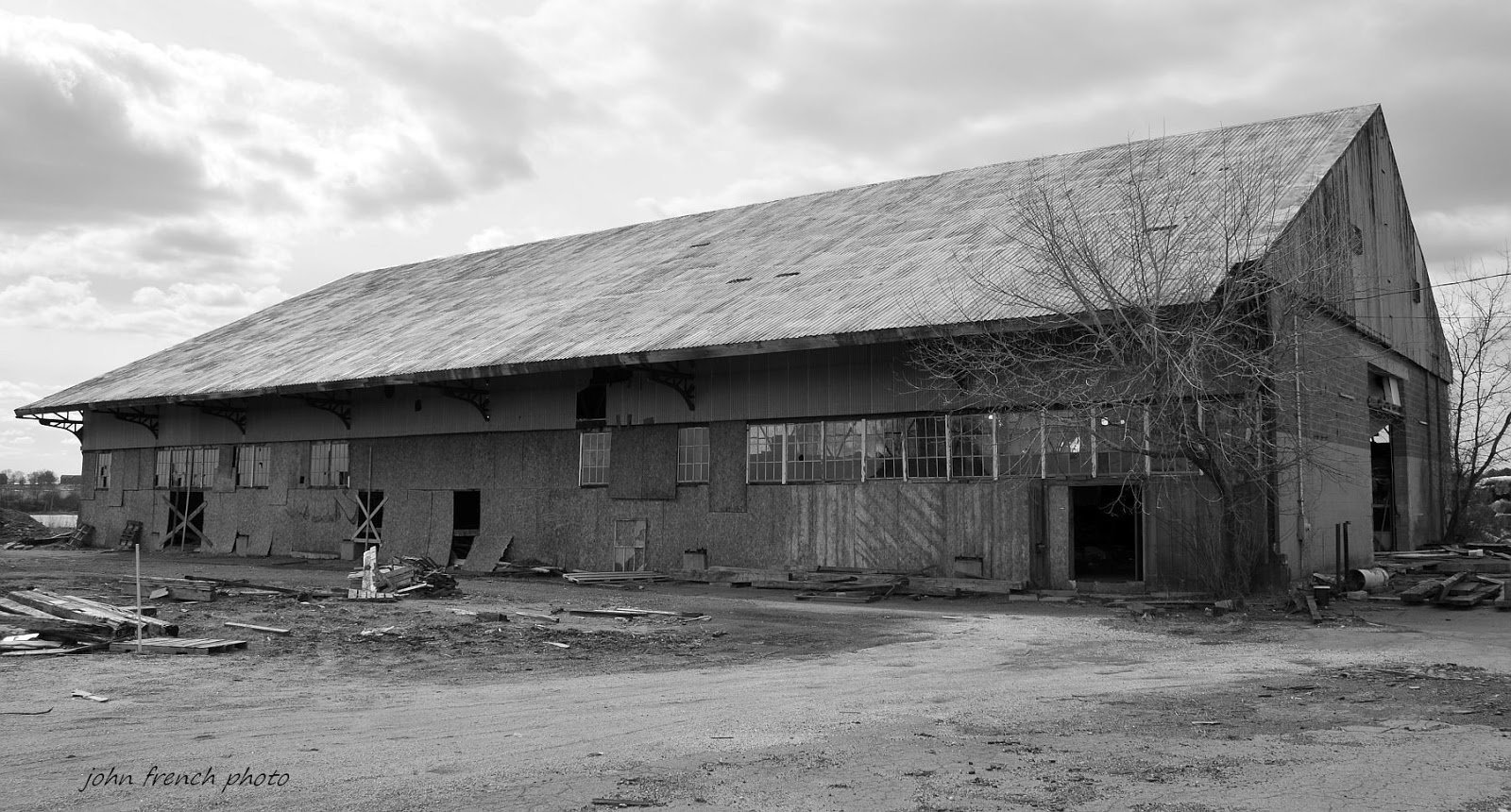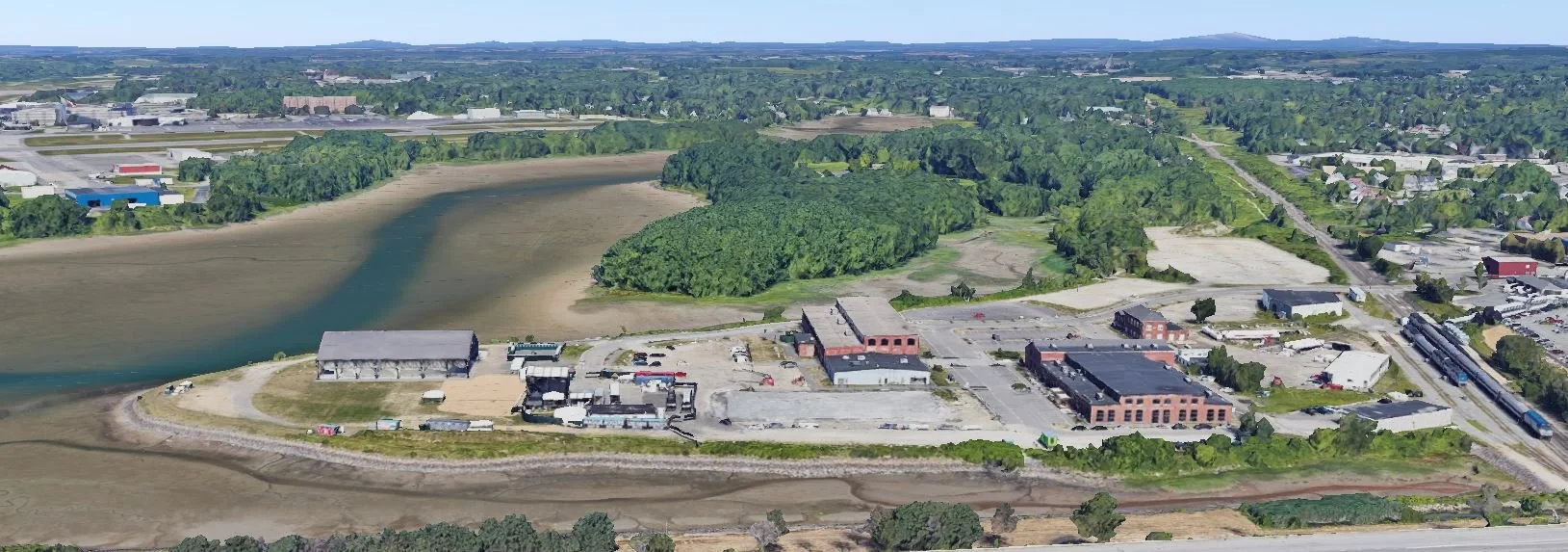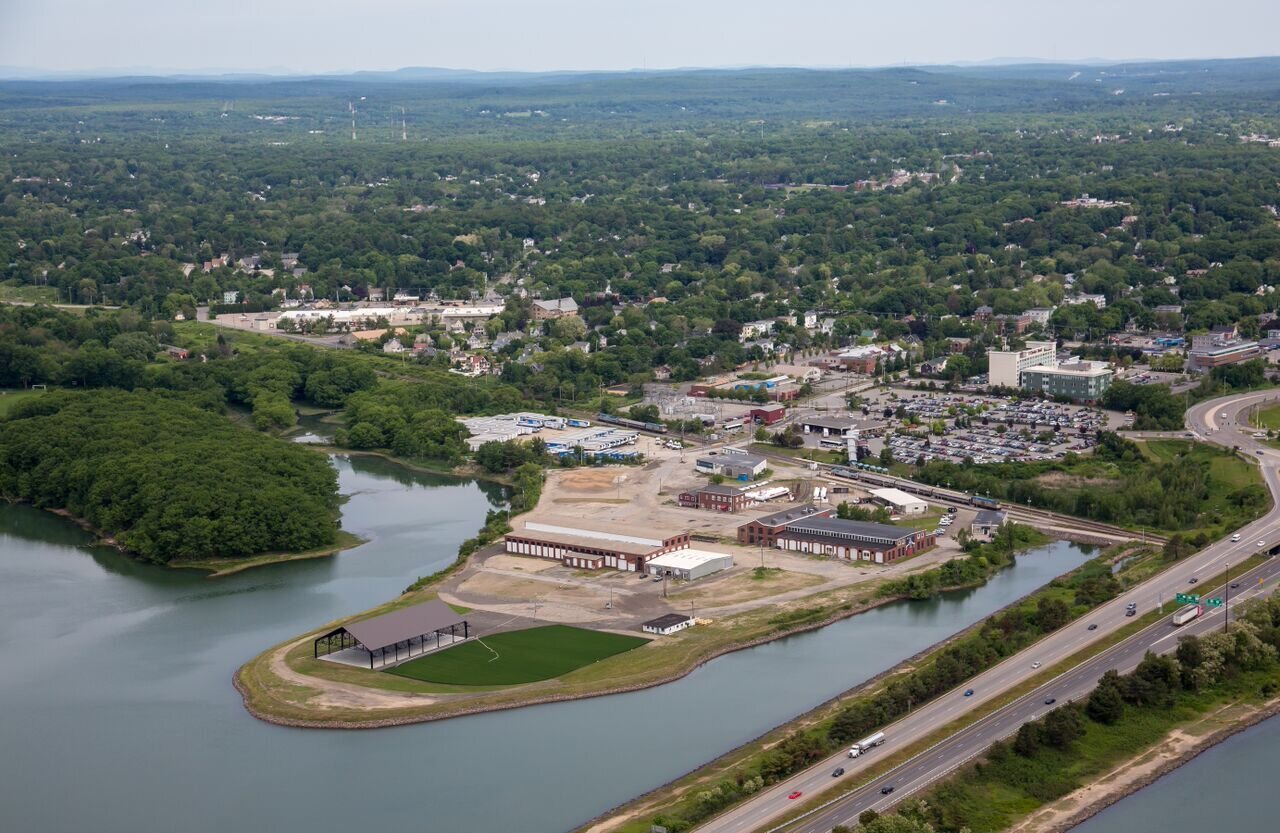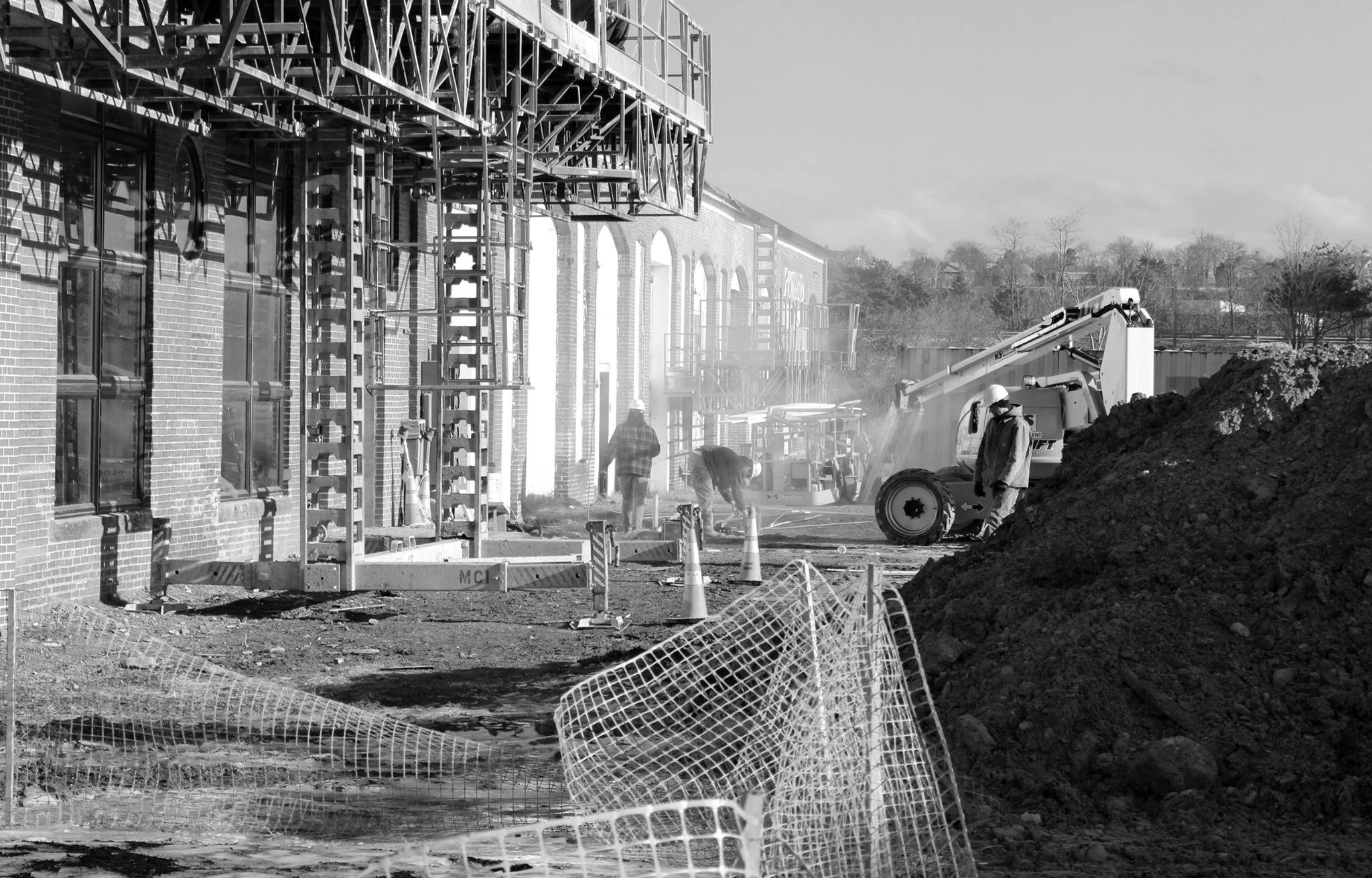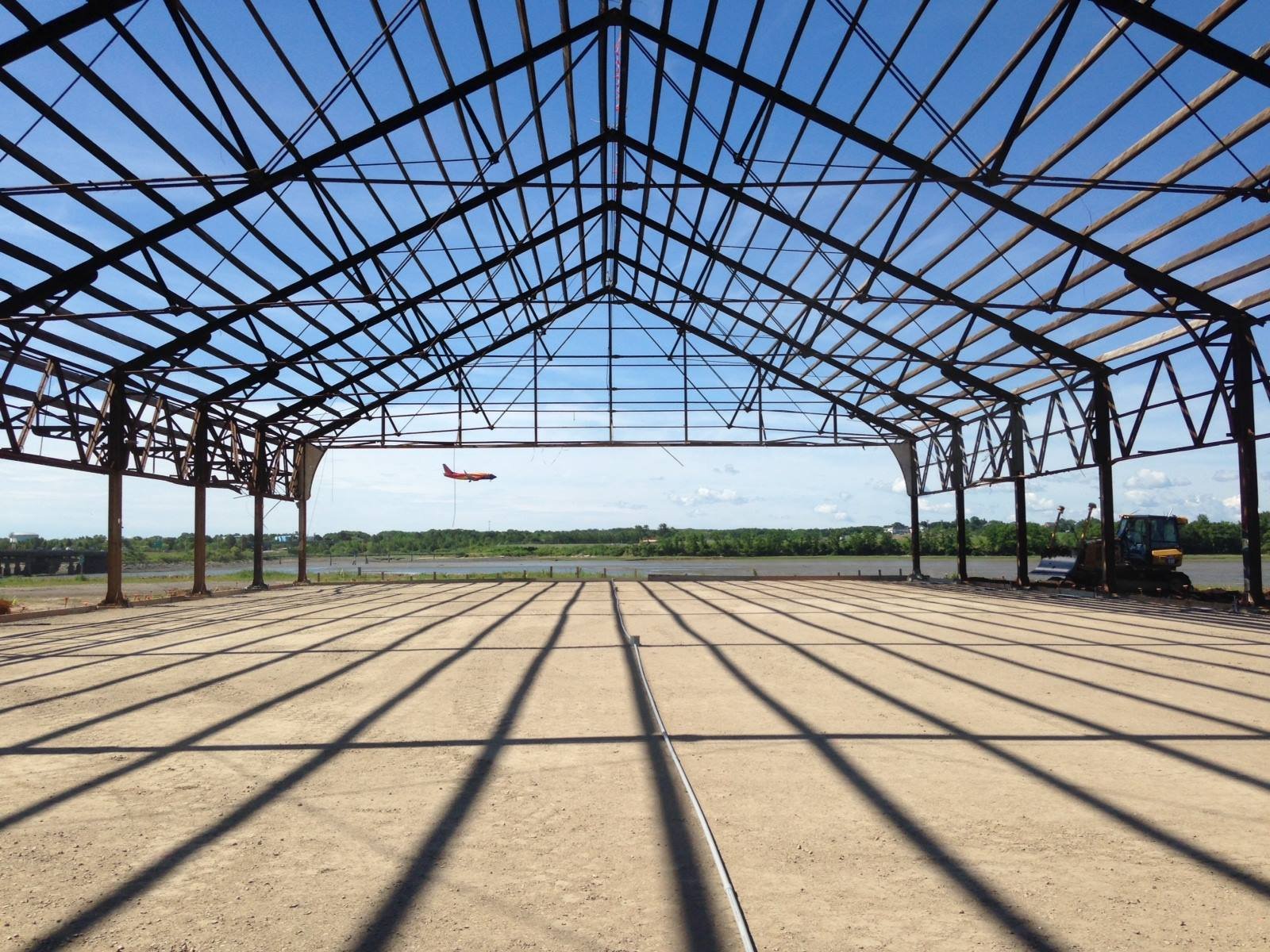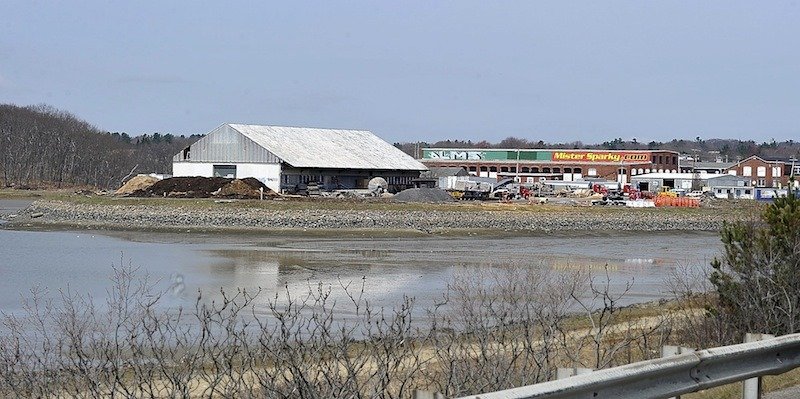A once overlooked piece of land transformed into a now thriving epicenter.
The site has a rich, industrial past, lending a glimpse into the shipping and railroad industries and was the port terminus of the Cumberland and Oxford Canal in the 19th century. In the early 20th century, the site served as a transfer point between rail cars and Portland’s busy shipyard. The rail yard on Thompson’s Point was a state-of-the-art hub for the repair of locomotive engines and boasted Maine’s first electric crane.
The decline of rail and shipping in the early and mid 20th century led to the eventual demolition of many of the rail yard buildings. By the 1940’s, the once bustling area was relegated to industrial manufacturing and storage. Infrastructure fell into disrepair.
As Maine’s largest city was revitalized as a destination for tourists, creatives, immigrants, and entrepreneurs, Thompson’s Point has seen reincarnation as a hub of creativity: brewers, restaurateurs, designers, musicians, artists and makers who have set up shop in the site’s once forgotten buildings. This 2.25 million square feet of land at the edge of the city has become a new center for community activity.
Our vision is to create a community focused environment that is open to all, which is why Thompson’s Point has become an iconic symbol of life in Maine: with creativity, vision, and independent spirit, anything is possible.
Past | Present
The Depot Pavilion & Concessions
The Depot Pavilion was once a prominent feature of Union Station on St. John Street in Portland until it’s demolition August 31st, 1961. The demolition of the iconic and historic station spawned the establishment of Greater Portland Landmarks, an organization that seeks to preserve historic features of the City. The final portion that remained was moved to Thompson’s Point and used for decades as a workshop and storage structure until development of the site began by the current owners, who brought it back to life.
Union Station, St. John Street, Portland, 1905 President Theodore Roosevelt addressing the crowd under the Pavilion, 1902 Brick South
Brick South, our largest indoor event space at Thompson’s Point at 25,000 square feet, was once a bustling locomotive repair shop, featured at the heart of the terminal peninsula. If you look closely, you can still see the large front bay openings. These were developed to track cars and engines in and out of the building with ease. Today, it boasts over 75 community gatherings per year including galas, weddings, fundraisers, corporate events and our Maker’s Market, a celebration of local artists, craftspeople, farmers and merchants. It’s historic features including original steel trussing, 3 story brick interior and industrial accents that only a venue, rich in history, can offer
Halo at the Point
Halo at the Point, our smaller, more intimate venue, is the endcap of the Brick North building. Originally used as a car repair shop, Brick North is now home to a host of local businesses. The building features, similar to Brick South, exposed steel beams, warm brick accents and large, open air spaces. Reminiscent of the days of rail work, Brick North continues to be a hub, bustling with activity.
Photos courtesy of the Maine Memory Network, Southern Maine University's Osher Map Library, City of Portland Planning & Development Department, and our Archive.